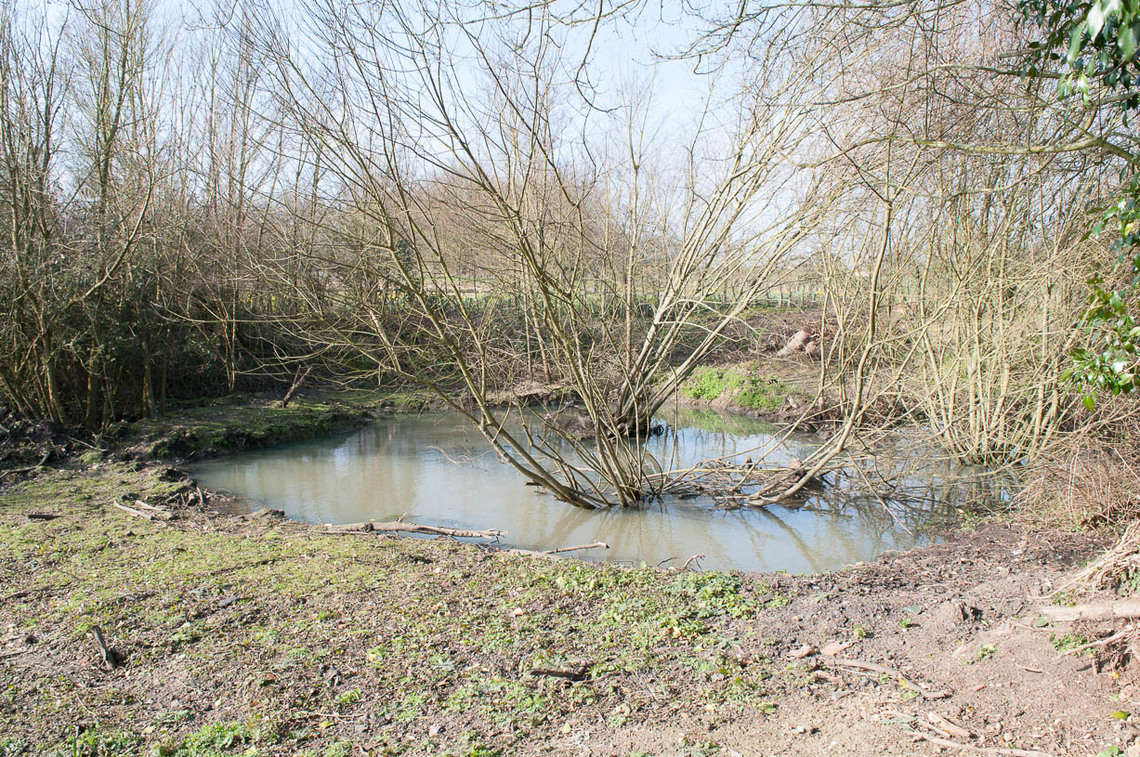Parish Church of the Holy Trinity, Bradwell
Records show this to be one of the most substantial examples of a Norman brick-building remaining in England. Built in the early 12th Century, and then altered in the 14th and 15th Centuries, the building is mainly constructed of flint and pebble rubble containing blocks of indurated conglomerate and some Roman tiles. The porch to the south side is timber framed and partly weatherboarded, as are the belfry and spire. The bell-turret has been altered at various dates, and now forms the base of an octagonal spire, probably late 16th Century, probably shingled at that time, but now weatherboarded. The Chancel and Nave form a single cell. Medieval Bricks
An English Heritage survey of the parish church at Bradwell-juxta-Coggeshall has revealed even earlier medieval bricks dating from the first half of the 12th century - before the Coggeshall Cistercians arrived in the country.
Warwick Rodwell, a leading church archaeologist found the bricks under plaster at Bradwell.
At Bradwell and elsewhere, bricks were used to form the angles of buildings, both inside and out - such as quoins, window jambs, door jambs, and arches - features unsuitable for local materials such as flint. Until the reinvention of brickmaking, Roman bricks had been recycled in East Anglia for these purposes (as at Colchester Castle), but in the early 12th century the supply of Roman bricks ran out.
The Bell-Turret
The bell-turret was built in C16 or early in C17. The mullions in the open lights in the south porch have been replaced by turned balusters, early C17 on the E side, modern except for half balusters on the W side. Features and fittings include: 3 bells by Miles Graye, 1621, 1609, 1632; C17 chests in the nave and in the cupboard under bell-turret; C17 communion table; C17 font cover in oak; C17 funeral helm in the chancel; C16 and C17 monuments and floor slabs; panelling of c1600 in the chancel, late C16 in nave, C17 beneath two S pews W of the parclose screen; Royal Arms of Charles II over the W gallery; in chancel, fragments of two small nude alabaster figures, on sill of SW window. <1> <2> Diagonal buttress at SE corner is C18/C19. Bell-turret is medieval, with complex history. Some windows altered in C19. The early C14 S porch was altered in late C16, sparingly restored in C19. Mullions in tracery replaced by turned balusters, late C16 on E side, C19, exept one half-baluster, on W.. C18 and C19 monuments. Two bells by Miles Graye, 1609, 1621. <3><4>
Images of the Church
 |
 |
 |
 |
 |
Holy Trinity Church pond
The unusually wet weather over the last few years caused an historic pond at Holy Trinity Church to overflow and cause considerable flooding to the grave sites. Last year Friends of Holy Trinity got together and cleared the debris and overgrown planting in the area. The result was the re-emergence of a pond that is shown on old maps going back a few hundred years. This winter has not seen a repeat of the flooding, but even so, efforts to prevent this happening again continue and quite soon the Parish Council will be installing a pump to divert water when it reaches a high level where it might overflow, thereby avoiding damage to the churchyard.
